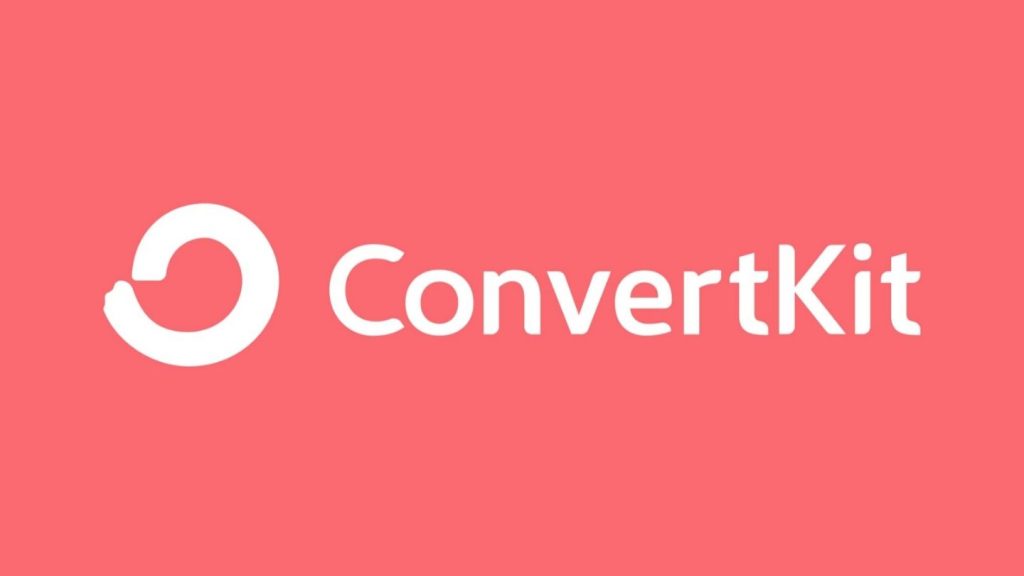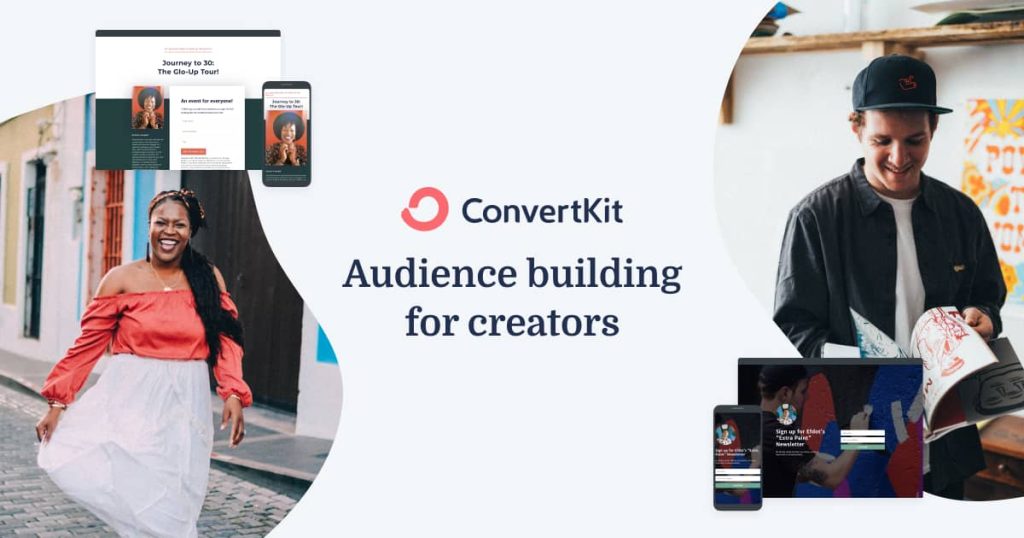What Is ConvertKit?
ConvertKit started in 2013 and was founded by Nathan Barry, a blog writer who was searching for a more creator-friendly e-mail marketing option.
Ever since ConvertKit has grown to power e-mail lists for over 428,000 developers reaching 253 million subscribers. In general, ConvertKit targets blog writers and other content creators and are less popular for eCommerce websites or brick-and-mortar companies.
ConvertKit Characteristics
ConvertKit is a blogger-friendly e-mail marketing platform, and there are numerous functions that assist you to build and engage with your email list. In this ConvertKit review, I’m diving into the main features you need to understand, but here’s a broad introduction of everything you get:
– Email Contractor – Create email broadcasts with an easy email full-screen editor for fast, personal-looking e-mails.
– Forms – Usage ConvertKit’s kind templates to start capturing brand-new subscribers.
– Segmentation – Arrange customers utilizing ConvertKit’s segments and tag system.
– Automations – Create automation with a visual flowchart home builder or use prebuilt templates.
– Landing Pages – Usage over 40 landing page design templates to promote ebooks, events, item launches, and webinars.
– Email Commerce – Offer digital products and memberships directly through email.
– A/B Evaluating – Split guinea pig lines and landing pages.
– WordPress Plugin – Easily embed ConvertKit forms on your blog with its WordPress plugin.
– Integrations – ConvertKit has over 90 combination choices.
– Free Migration – Paying customers to get a free migration to ConvertKit.
– Facebook Customized Audiences – Add your Facebook pixel to your ConvertKit landing pages and remarket to subscribers with Developer Pro.
– Link Reroutes – Redirect incorrect or damaged links in email blasts with Developer Pro.
– Two-Factor Authentication – Allow this function to log in safely to ConvertKit.

Email Editor
An essential function to think about for any email marketing tool is its e-mail editor. When developing your email list, you desire e-mail blasts and funnel development to be instinctive. Plus, having more e-mail templates and customization alternatives assists your e-mails to look less spammy and ultimately keeps your subscribers reading.
ConvertKit does not transform the wheel with its email home builder. You can create email “broadcasts” that are one-time e-mails you send to customers. There are 9 ConvertKit email templates, and they’re actually quite plain and focus on text content rather than visuals.
This means the emails you send with ConvertKit look more like personal emails you’d send rather than sales spam emails. According to ConvertKit, plain-text e-mails carry out much better than e-mails that are clogged with images and video.
When it comes to the email editor itself, writing emails resembles composing a routine work e-mail. This makes ConvertKit even quicker to utilize than using drag-and-drop editors with service providers like MailerLite.
Web Form Builder and Landing Pages
ConvertKit has four email capture forms you can utilize to develop your e-mail list:
– Inline – Appears as part of your blog content
– Popup – Displays a modal box prompting for a visitor’s email address. Can display based on the conditions you specify.
– Slide in – Display from the bottom of the web page attracting the visitor’s attention.
– Sticky bar – Like the service Hello Bar, which shows at the top of the web page.
Like its email templates, there are nine form templates. You can quickly change form colors, images, and text to suit your brand and messaging.
You can make forms fire depending on certain logic, like scroll percentage down a page, device type, and upon exit. You can also show different content or hide the form from readers who are already subscribed.
Overall, if you want to deliver a freebie or capture newsletter readers, ConvertKit has enough form functionality. You can also create unique opt-in forms for different blog categories and automatically tag subscribers.
If you’re a multi-niche blogger, this feature is a selling point.
As for landing pages, you can capture emails on ConvertKit-hosted landing pages or pages on your domain. ConvertKit has over 40 landing page templates available for categories like:
– eBooks.
– Events.
– Newsletters.
– Podcasts.
– Products.
– Waitlists.
– Webinars.
Overall, ConvertKit has more than enough forms and landing pages to help you build your email list and promote your products or services. The variety of landing pages is also a plus worth nothing.
While not as advanced as OptinMonster’s features, ConvertKit’s options are good enough for a beginner blogger.

ConvertKit Segments And Tags.
ConvertKit lets you organize subscribers in two ways:
– Tags – Help organize existing subscribers based on previous behavior, like purchasing a product or clicking specific links in your emails.
– Segments – This lets you create segments of your email list using one or more tags.
Here’s an example: you sell multiple types of online courses. ConvertKit lets you tag subscribers who purchase different courses with a unique tag for each course. You can then create a segment that includes all past course purchasers and market your latest course to them. You can create a segment that excludes previous course purchasers and market to non-purchasers to try and get them to buy.
You can create segments using other filters like specific sign-up forms subscribers completed or specific products subscribers bought. But tags are the most powerful way to create new segments to market to.
Unlike ActiveCampaign, it does not support email lists as a way of organizing your subscribers.
Email Marketing Automation.
Email automation is an important feature since typically, the more work you can automate off your plate, the more time you save and the more traffic and blogging revenue you generate.
ConvertKit doesn’t have as many automation features as ActiveCampaign, but ConvertKit keeps things user-friendly with its visual flowchart builder.
For the non-technical, my favorite part is the pre-built automation templates you can use.
As for automation logic, ConvertKit lets you set a series of triggers, actions, and conditions that determine when and how your automation sequences carry out.
Triggers.
In terms of triggers, which determine when a sequence begins, ConvertKit has several options:
– Subscribes to a sequence.
– Subscribes to a form.
– Completes a sequence.
– Clicks a link.
– Has a tag been added or removed
Actions.
As for actions, which is what ConvertKit actually does when a trigger fires, you have slightly more options:
– Subscribe or unsubscribe to a sequence.
– Subscribe or unsubscribe to a form.
– Add or remove a tag.
– Set a custom field.
This might sound confusing if you’re new to email marketing, but again, this is why the pre-built automation templates are an advantage of ConvertKit.
If you want to create welcome flows for new subscribers, send follow-up emails to purchasers, or create straightforward email sequences, ConvertKit has you covered.
Conditions.
When it comes to adding someone to an email marketing automation, ConvertKit has only these possible conditions:
– Tag added.
– Custom field.
Integrations.
ConvertKit has over 90 integrations available, with popular categories and partners including:
– CRM – Includes Flow.ly, JetpackCRM, and Monday.com.
– E-Commerce – Includes Gumroad, SamCart, Stripe, and Shopify.
– Lead Capture – Includes ClickFunnels, Convertful, OptinMonster, and LeadPages.
– Memberships – Includes Memberful, MemberMouse, Podia, and Teachery.
– Webinars – Includes Crowdcast, Demio, EasyWebinar, and WebinarJam.
– Website Platforms – Includes Kajabi, Wix, WordPress, and WP Engine.
ConvertKit also integrates with Zapier and has its own API, so you really shouldn’t run into any issues with integrating with third-party software.
Competing providers like ActiveCampaign have far more integration options and a more developer-friendly API, but for most bloggers, this isn’t a difference-maker.
Setting up API access with ActiveCampaign is fairly simple. Once you create an account, you can find your API key under the developer tools in your settings. ActiveCampaign also has a developer portal that’s full of API documentation and a developer community board where you can ask questions.
And if ActiveCampaign doesn’t directly integrate with a service, it’s more than likely you can use Zapier to do the job.
Email Deliverability.
Email deliverability is the percentage of emails you send that actually make it to subscribers’ inboxes. This metric is very underrated, but think about it: what good is an email service provider if your emails keep getting marked as spam?
ConvertKit has competitive email deliverability with other top email marketing companies. According to ConvertKit, its deliverability rate is 99.72%, and the average open rate of all emails is around 29.2%, which is quite high.
Overall, I like ConvertKit because the emails seem more personal and aren’t so salesly because templates are mostly text-only.
Plus, ConvertKit emails have an unsubscribe option in the footer by default, which is a must for email marketing under the CAN-SPAM Act. You can also customize this text and the unsubscribe message, and ConvertKit is GDPR-compliant.
Email Analytics and Reporting.
Optimizing your email marketing strategy requires data so you know what works and what doesn’t. On this front, ConvertKit offers basic analytics and reporting on its Broadcast dashboard.
This dashboard breaks down your total email sends, open rates, click rates, unsubscribers, and errors for every email you send.
One nifty feature is the “resend to unopened” option that lets you resend emails to people who didn’t open your email the first time. Just be careful to not spam people endlessly with the same emails.
ConvertKit also lets you track similar data for your email sequences. And, with Creator Pro, you get advanced deliverability reporting which can help you identify what’s potentially dragging down your email deliverability.
ConvertKit Pricing.
ConvertKit’s pricing depends on how many subscribers you have and if you choose the Creator or Creator Pro plan. There’s also a free plan that’s available for up to 1,000 subscribers, so you can try ConvertKit without spending a penny.
Here’s how ConvertKit’s pricing and feature access breaks down for each plan with 1,000 subscribers:
Free.
$ 0/mo$.
Creator.
$ 9/mo$(300 subscribers), $ 25/mo$ (1,000 subscribers)
Creator Pro.
$ 25/mo$(300 subscribers), $ 50/mo$ (1,000 subscribers)
For most bloggers, Creator has enough functionality. One perk of Creator Pro is integration with Facebook Custom Audiences to let you remarket with paid ads. Creator Pro also lets you create a newsletter rewards program that pays subscribers for referring new readers to your email list.
There are some other useful Creator Pro features, like being able to redirect links if you accidentally send out an email blast with an incorrect or broken link. If you’re a solo blogger and don’t need team members or Facebook Custom Audiences, skip paying for Creator Pro.
Overall, ConvertKit is on the pricier side compared to alternatives like MailerLite and Moosend. At 5,000 subscribers, Creator costs $79 per month. At 10,000 subscribers, the cost is $119 per month.
You get two months for free if you switch to annual billing. There’s also a 14-day free trial for both Creator and Creator Pro, and you don’t need to enter a credit card.
The bottom line is that ConvertKit is a little expensive. But if you’re stuck on email marketing because other email tools aren’t intuitive, ConvertKit’s worth paying for. Plus, you can easily recoup your monthly cost if you get more blog traffic and promote different products or courses.
Pros.
– Free To Use – For under 1,000 emails ConvertKit is free to use.
– Easy-To-Use – It is easy to get started and use ConvertKit and can master it quickly.
– Plain-Text Emails – ConvertKit’s emails can look exactly like a personal email, which helps in deliverability.
– Email Deliverability – ConvertKit has some of the highest deliverability rates in the industry.
Cons.
– Costly – This can be much more expensive compared to other email marketing platforms.
– Fewer Integrations – Compared to ActiveCampaign, ConvertKit has fewer integration options. Zapier is available.
– Less Flexible Automation – ConvertKit isn’t as robust in automation compared to ActiveCampaign.
Summary.
ConvertKit is made by bloggers for bloggers, and overall, it’s a very intuitive email marketing platform.
If you want personal-looking emails, decent automation capabilities, and to sell digital products or subscriptions, ConvertKit is for you. Even with the slightly higher price, the overall ease of use and perks like prebuilt automation templates are worth the cost.
If you want more automation features and control, something like ActiveCampaign is a better choice. Otherwise, ConvertKit is an excellent email marketing tool for any content creator.
An important feature to consider for any email marketing tool is its email editor. When building your email list, you want email blasts and funnel creation to be intuitive. Plus, having more email templates and personalization options helps your emails look less spammy and ultimately keeps your subscribers reading.
You can create email “broadcasts” that are one-time emails you send to subscribers. If you’re stuck on email marketing because other email tools aren’t intuitive, ConvertKit’s worth paying for.
